Thanh Thi Nguyen
Task Allocation for Autonomous Machines using Computational Intelligence and Deep Reinforcement Learning
Aug 28, 2025Abstract:Enabling multiple autonomous machines to perform reliably requires the development of efficient cooperative control algorithms. This paper presents a survey of algorithms that have been developed for controlling and coordinating autonomous machines in complex environments. We especially focus on task allocation methods using computational intelligence (CI) and deep reinforcement learning (RL). The advantages and disadvantages of the surveyed methods are analysed thoroughly. We also propose and discuss in detail various future research directions that shed light on how to improve existing algorithms or create new methods to enhance the employability and performance of autonomous machines in real-world applications. The findings indicate that CI and deep RL methods provide viable approaches to addressing complex task allocation problems in dynamic and uncertain environments. The recent development of deep RL has greatly contributed to the literature on controlling and coordinating autonomous machines, and it has become a growing trend in this area. It is envisaged that this paper will provide researchers and engineers with a comprehensive overview of progress in machine learning research related to autonomous machines. It also highlights underexplored areas, identifies emerging methodologies, and suggests new avenues for exploration in future research within this domain.
Large Language Models for Detection of Life-Threatening Texts
Jun 12, 2025Abstract:Detecting life-threatening language is essential for safeguarding individuals in distress, promoting mental health and well-being, and preventing potential harm and loss of life. This paper presents an effective approach to identifying life-threatening texts using large language models (LLMs) and compares them with traditional methods such as bag of words, word embedding, topic modeling, and Bidirectional Encoder Representations from Transformers. We fine-tune three open-source LLMs including Gemma, Mistral, and Llama-2 using their 7B parameter variants on different datasets, which are constructed with class balance, imbalance, and extreme imbalance scenarios. Experimental results demonstrate a strong performance of LLMs against traditional methods. More specifically, Mistral and Llama-2 models are top performers in both balanced and imbalanced data scenarios while Gemma is slightly behind. We employ the upsampling technique to deal with the imbalanced data scenarios and demonstrate that while this method benefits traditional approaches, it does not have as much impact on LLMs. This study demonstrates a great potential of LLMs for real-world life-threatening language detection problems.
Unveiling the Black Box: A Multi-Layer Framework for Explaining Reinforcement Learning-Based Cyber Agents
May 16, 2025Abstract:Reinforcement Learning (RL) agents are increasingly used to simulate sophisticated cyberattacks, but their decision-making processes remain opaque, hindering trust, debugging, and defensive preparedness. In high-stakes cybersecurity contexts, explainability is essential for understanding how adversarial strategies are formed and evolve over time. In this paper, we propose a unified, multi-layer explainability framework for RL-based attacker agents that reveals both strategic (MDP-level) and tactical (policy-level) reasoning. At the MDP level, we model cyberattacks as a Partially Observable Markov Decision Processes (POMDPs) to expose exploration-exploitation dynamics and phase-aware behavioural shifts. At the policy level, we analyse the temporal evolution of Q-values and use Prioritised Experience Replay (PER) to surface critical learning transitions and evolving action preferences. Evaluated across CyberBattleSim environments of increasing complexity, our framework offers interpretable insights into agent behaviour at scale. Unlike previous explainable RL methods, which are often post-hoc, domain-specific, or limited in depth, our approach is both agent- and environment-agnostic, supporting use cases ranging from red-team simulation to RL policy debugging. By transforming black-box learning into actionable behavioural intelligence, our framework enables both defenders and developers to better anticipate, analyse, and respond to autonomous cyber threats.
Object Detection Approaches to Identifying Hand Images with High Forensic Values
Dec 21, 2024Abstract:Forensic science plays a crucial role in legal investigations, and the use of advanced technologies, such as object detection based on machine learning methods, can enhance the efficiency and accuracy of forensic analysis. Human hands are unique and can leave distinct patterns, marks, or prints that can be utilized for forensic examinations. This paper compares various machine learning approaches to hand detection and presents the application results of employing the best-performing model to identify images of significant importance in forensic contexts. We fine-tune YOLOv8 and vision transformer-based object detection models on four hand image datasets, including the 11k hands dataset with our own bounding boxes annotated by a semi-automatic approach. Two YOLOv8 variants, i.e., YOLOv8 nano (YOLOv8n) and YOLOv8 extra-large (YOLOv8x), and two vision transformer variants, i.e., DEtection TRansformer (DETR) and Detection Transformers with Assignment (DETA), are employed for the experiments. Experimental results demonstrate that the YOLOv8 models outperform DETR and DETA on all datasets. The experiments also show that YOLOv8 approaches result in superior performance compared with existing hand detection methods, which were based on YOLOv3 and YOLOv4 models. Applications of our fine-tuned YOLOv8 models for identifying hand images (or frames in a video) with high forensic values produce excellent results, significantly reducing the time required by forensic experts. This implies that our approaches can be implemented effectively for real-world applications in forensics or related fields.
Sensitive Image Classification by Vision Transformers
Dec 21, 2024Abstract:When it comes to classifying child sexual abuse images, managing similar inter-class correlations and diverse intra-class correlations poses a significant challenge. Vision transformer models, unlike conventional deep convolutional network models, leverage a self-attention mechanism to capture global interactions among contextual local elements. This allows them to navigate through image patches effectively, avoiding incorrect correlations and reducing ambiguity in attention maps, thus proving their efficacy in computer vision tasks. Rather than directly analyzing child sexual abuse data, we constructed two datasets: one comprising clean and pornographic images and another with three classes, which additionally include images indicative of pornography, sourced from Reddit and Google Open Images data. In our experiments, we also employ an adult content image benchmark dataset. These datasets served as a basis for assessing the performance of vision transformer models in pornographic image classification. In our study, we conducted a comparative analysis between various popular vision transformer models and traditional pre-trained ResNet models. Furthermore, we compared them with established methods for sensitive image detection such as attention and metric learning based CNN and Bumble. The findings demonstrated that vision transformer networks surpassed the benchmark pre-trained models, showcasing their superior classification and detection capabilities in this task.
Adaptive Knowledge Distillation for Classification of Hand Images using Explainable Vision Transformers
Aug 20, 2024Abstract:Assessing the forensic value of hand images involves the use of unique features and patterns present in an individual's hand. The human hand has distinct characteristics, such as the pattern of veins, fingerprints, and the geometry of the hand itself. This paper investigates the use of vision transformers (ViTs) for classification of hand images. We use explainability tools to explore the internal representations of ViTs and assess their impact on the model outputs. Utilizing the internal understanding of ViTs, we introduce distillation methods that allow a student model to adaptively extract knowledge from a teacher model while learning on data of a different domain to prevent catastrophic forgetting. Two publicly available hand image datasets are used to conduct a series of experiments to evaluate performance of the ViTs and our proposed adaptive distillation methods. The experimental results demonstrate that ViT models significantly outperform traditional machine learning methods and the internal states of ViTs are useful for explaining the model outputs in the classification task. By averting catastrophic forgetting, our distillation methods achieve excellent performance on data from both source and target domains, particularly when these two domains exhibit significant dissimilarity. The proposed approaches therefore can be developed and implemented effectively for real-world applications such as access control, identity verification, and authentication systems.
Manipulating Recommender Systems: A Survey of Poisoning Attacks and Countermeasures
Apr 23, 2024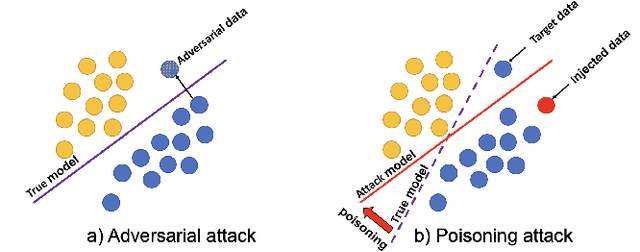
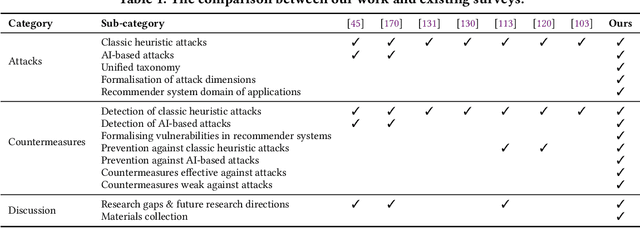
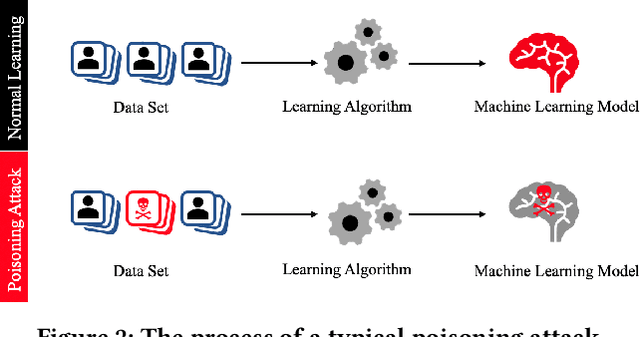
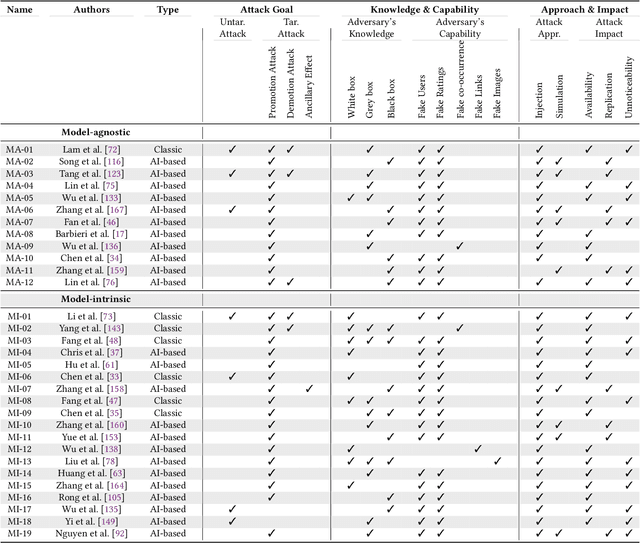
Abstract:Recommender systems have become an integral part of online services to help users locate specific information in a sea of data. However, existing studies show that some recommender systems are vulnerable to poisoning attacks, particularly those that involve learning schemes. A poisoning attack is where an adversary injects carefully crafted data into the process of training a model, with the goal of manipulating the system's final recommendations. Based on recent advancements in artificial intelligence, such attacks have gained importance recently. While numerous countermeasures to poisoning attacks have been developed, they have not yet been systematically linked to the properties of the attacks. Consequently, assessing the respective risks and potential success of mitigation strategies is difficult, if not impossible. This survey aims to fill this gap by primarily focusing on poisoning attacks and their countermeasures. This is in contrast to prior surveys that mainly focus on attacks and their detection methods. Through an exhaustive literature review, we provide a novel taxonomy for poisoning attacks, formalise its dimensions, and accordingly organise 30+ attacks described in the literature. Further, we review 40+ countermeasures to detect and/or prevent poisoning attacks, evaluating their effectiveness against specific types of attacks. This comprehensive survey should serve as a point of reference for protecting recommender systems against poisoning attacks. The article concludes with a discussion on open issues in the field and impactful directions for future research. A rich repository of resources associated with poisoning attacks is available at https://github.com/tamlhp/awesome-recsys-poisoning.
Fine-Tuning Llama 2 Large Language Models for Detecting Online Sexual Predatory Chats and Abusive Texts
Aug 28, 2023



Abstract:Detecting online sexual predatory behaviours and abusive language on social media platforms has become a critical area of research due to the growing concerns about online safety, especially for vulnerable populations such as children and adolescents. Researchers have been exploring various techniques and approaches to develop effective detection systems that can identify and mitigate these risks. Recent development of large language models (LLMs) has opened a new opportunity to address this problem more effectively. This paper proposes an approach to detection of online sexual predatory chats and abusive language using the open-source pretrained Llama 2 7B-parameter model, recently released by Meta GenAI. We fine-tune the LLM using datasets with different sizes, imbalance degrees, and languages (i.e., English, Roman Urdu and Urdu). Based on the power of LLMs, our approach is generic and automated without a manual search for a synergy between feature extraction and classifier design steps like conventional methods in this domain. Experimental results show a strong performance of the proposed approach, which performs proficiently and consistently across three distinct datasets with five sets of experiments. This study's outcomes indicate that the proposed method can be implemented in real-world applications (even with non-English languages) for flagging sexual predators, offensive or toxic content, hate speech, and discriminatory language in online discussions and comments to maintain respectful internet or digital communities. Furthermore, it can be employed for solving text classification problems with other potential applications such as sentiment analysis, spam and phishing detection, sorting legal documents, fake news detection, language identification, user intent recognition, text-based product categorization, medical record analysis, and resume screening.
Detecting Rumours with Latency Guarantees using Massive Streaming Data
May 13, 2022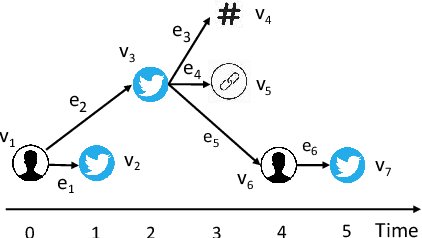

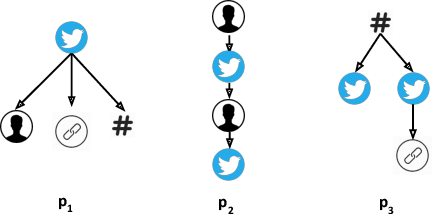

Abstract:Today's social networks continuously generate massive streams of data, which provide a valuable starting point for the detection of rumours as soon as they start to propagate. However, rumour detection faces tight latency bounds, which cannot be met by contemporary algorithms, given the sheer volume of high-velocity streaming data emitted by social networks. Hence, in this paper, we argue for best-effort rumour detection that detects most rumours quickly rather than all rumours with a high delay. To this end, we combine techniques for efficient, graph-based matching of rumour patterns with effective load shedding that discards some of the input data while minimising the loss in accuracy. Experiments with large-scale real-world datasets illustrate the robustness of our approach in terms of runtime performance and detection accuracy under diverse streaming conditions.
Artificial Intelligence for the Metaverse: A Survey
Feb 15, 2022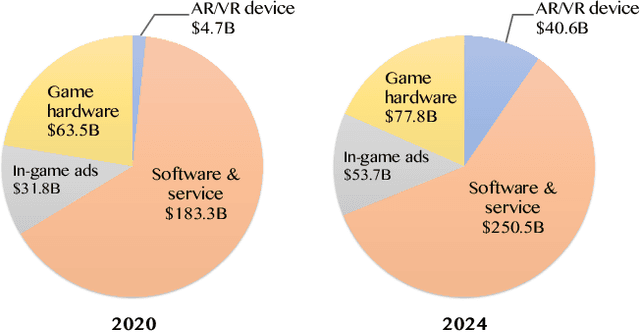
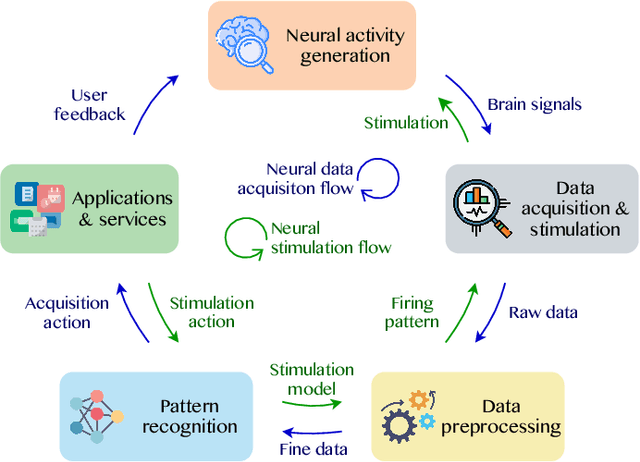
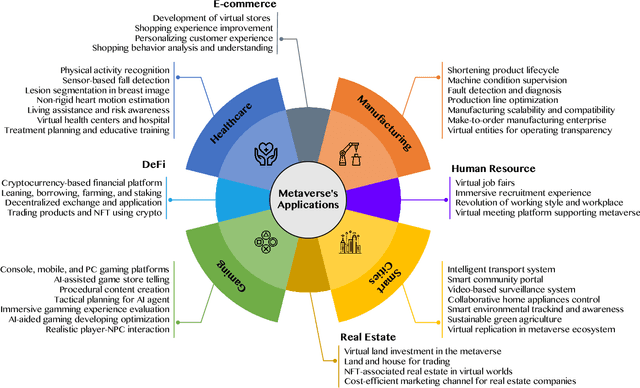

Abstract:Along with the massive growth of the Internet from the 1990s until now, various innovative technologies have been created to bring users breathtaking experiences with more virtual interactions in cyberspace. Many virtual environments with thousands of services and applications, from social networks to virtual gaming worlds, have been developed with immersive experience and digital transformation, but most are incoherent instead of being integrated into a platform. In this context, metaverse, a term formed by combining meta and universe, has been introduced as a shared virtual world that is fueled by many emerging technologies, such as fifth-generation networks and beyond, virtual reality, and artificial intelligence (AI). Among such technologies, AI has shown the great importance of processing big data to enhance immersive experience and enable human-like intelligence of virtual agents. In this survey, we make a beneficial effort to explore the role of AI in the foundation and development of the metaverse. We first deliver a preliminary of AI, including machine learning algorithms and deep learning architectures, and its role in the metaverse. We then convey a comprehensive investigation of AI-based methods concerning six technical aspects that have potentials for the metaverse: natural language processing, machine vision, blockchain, networking, digital twin, and neural interface, and being potential for the metaverse. Subsequently, several AI-aided applications, such as healthcare, manufacturing, smart cities, and gaming, are studied to be deployed in the virtual worlds. Finally, we conclude the key contribution of this survey and open some future research directions in AI for the metaverse.
 Add to Chrome
Add to Chrome Add to Firefox
Add to Firefox Add to Edge
Add to Edge